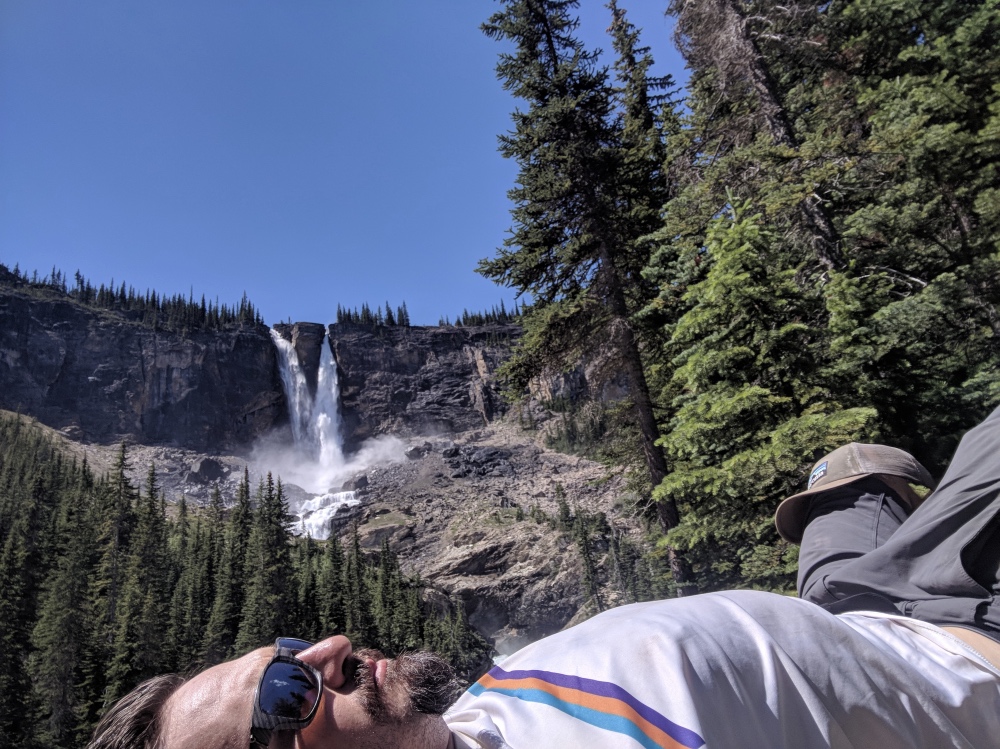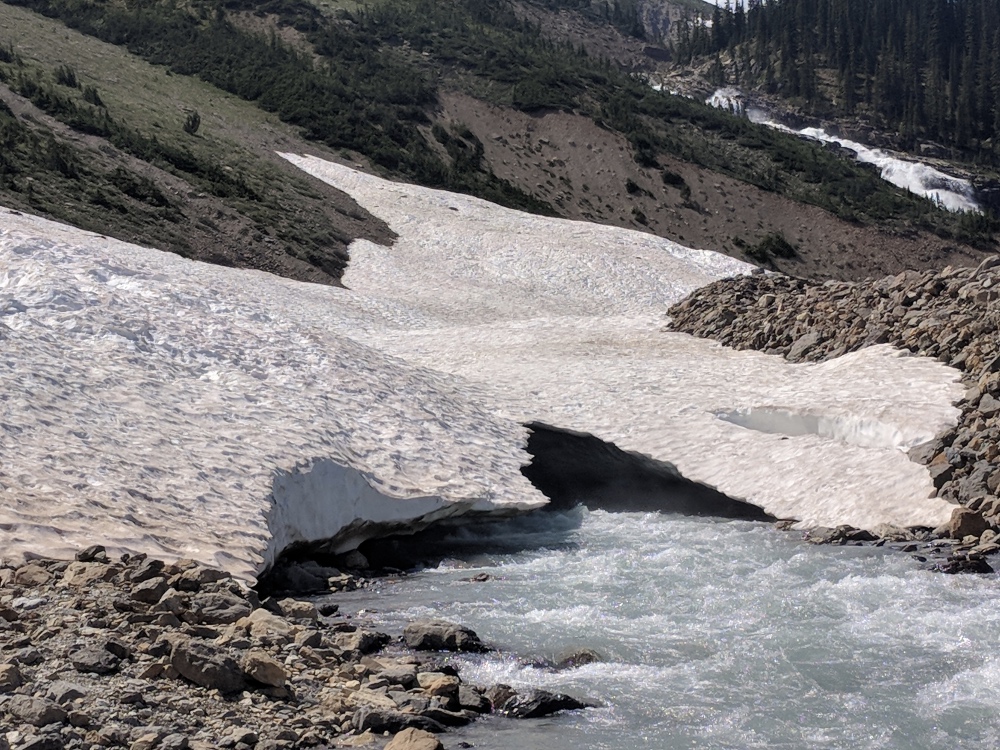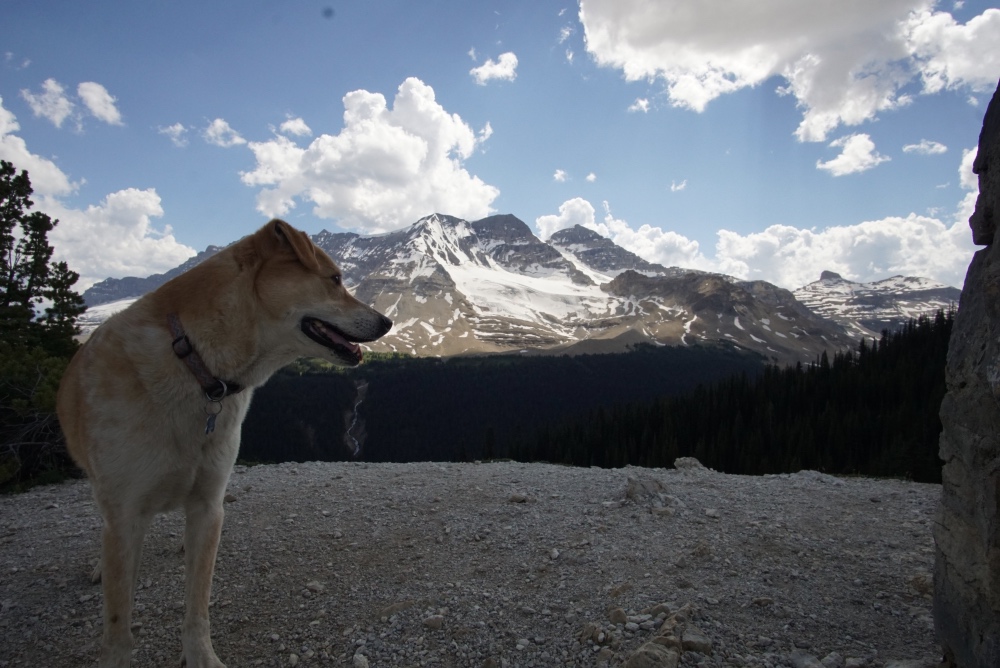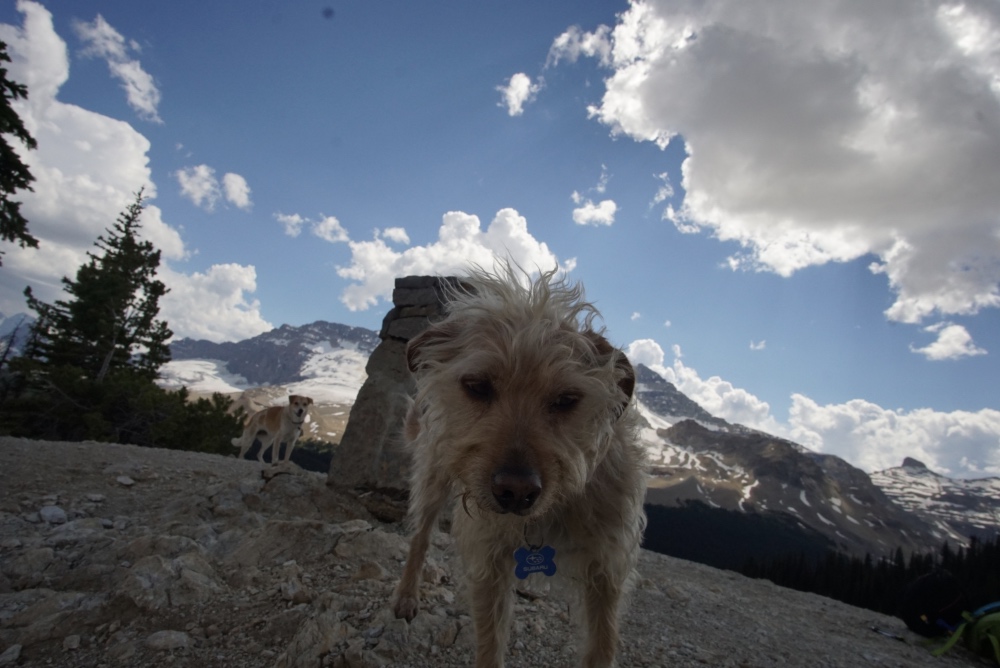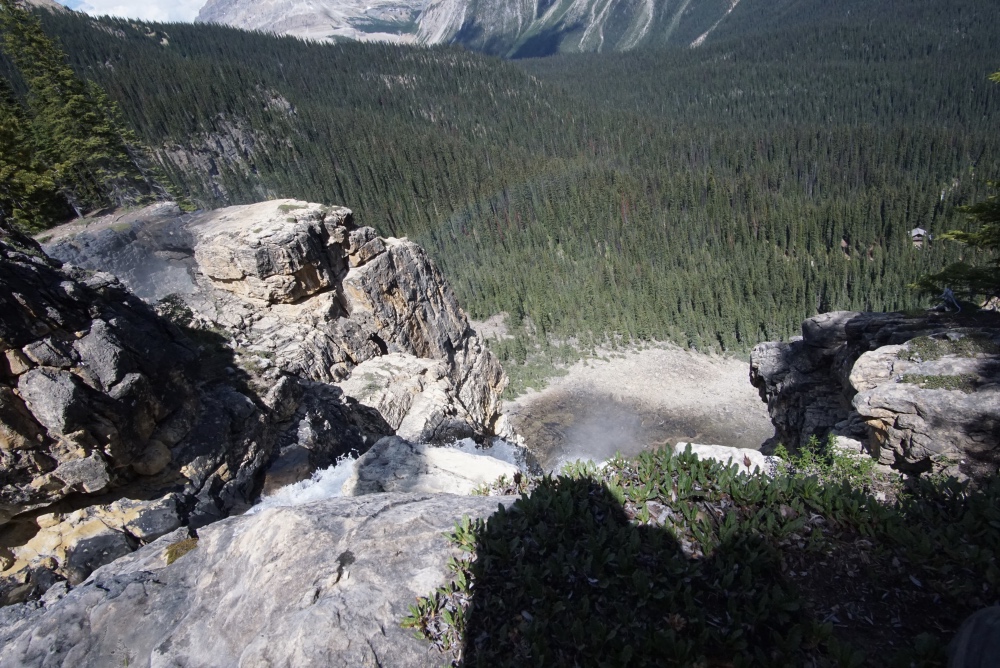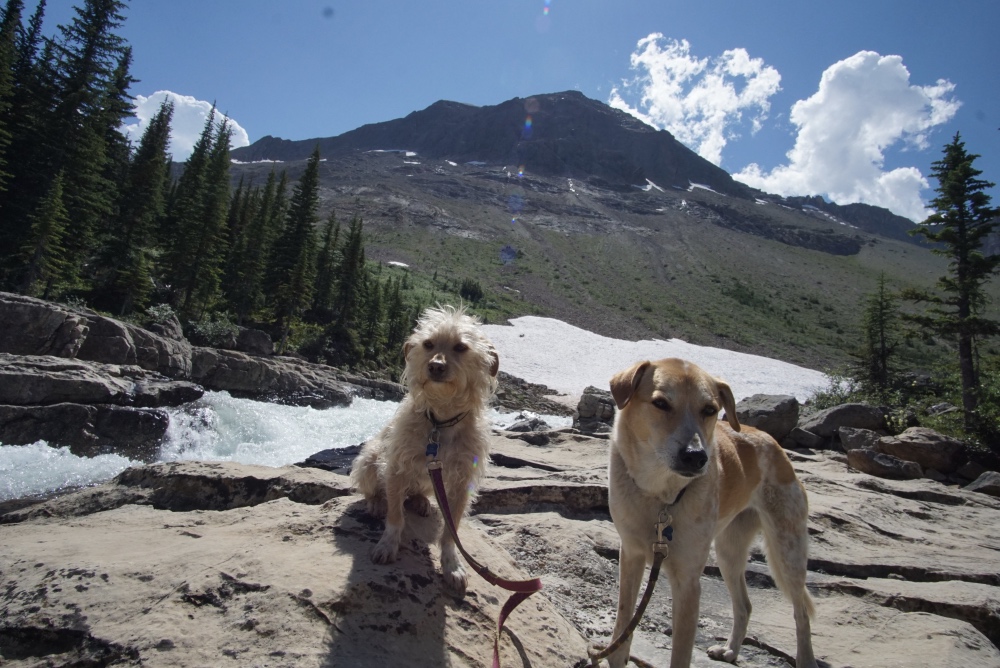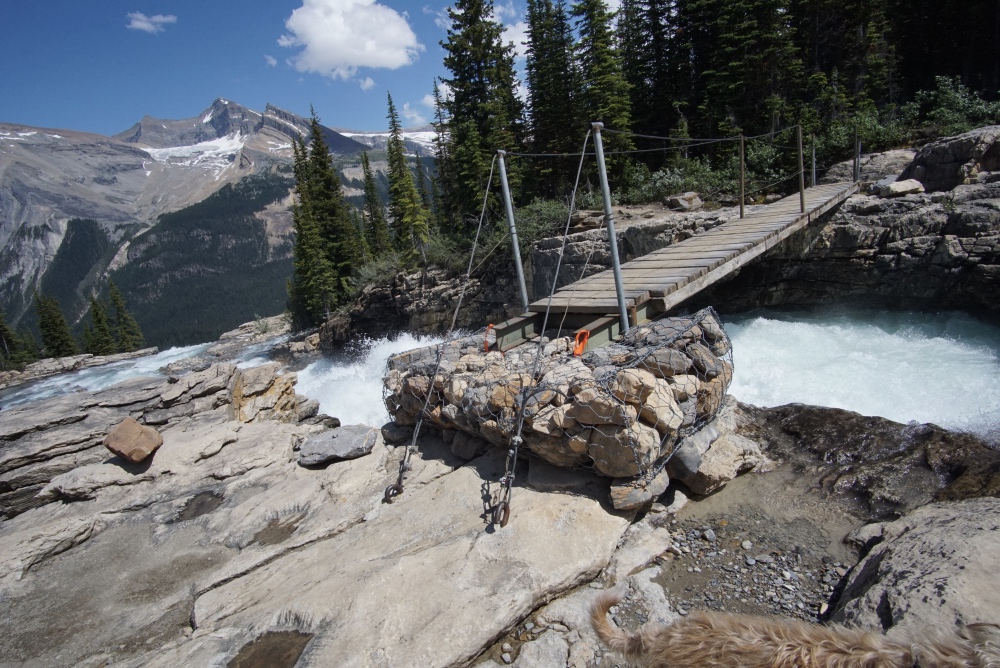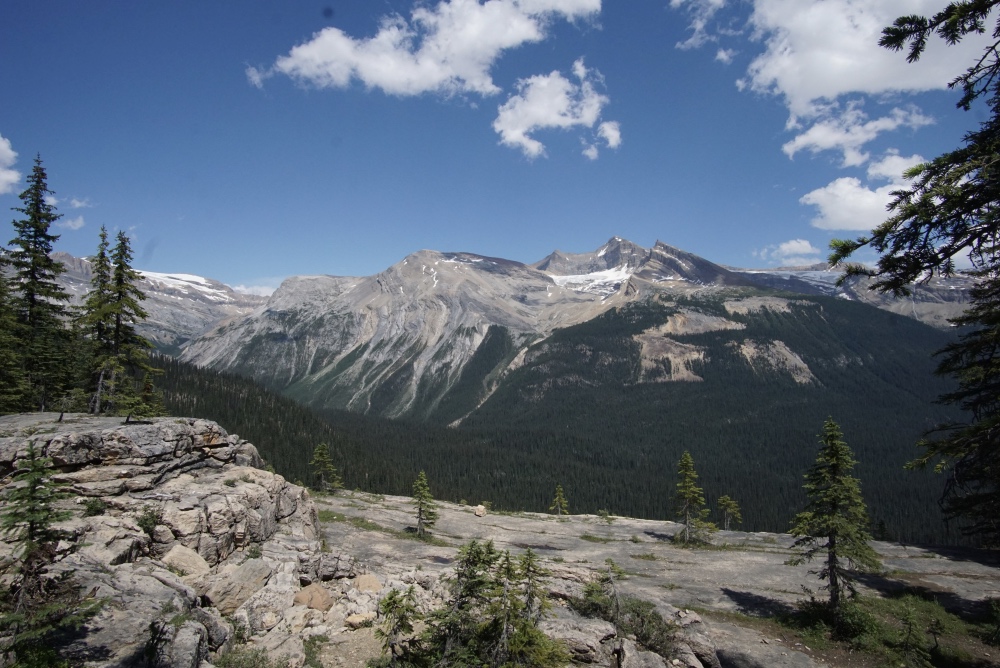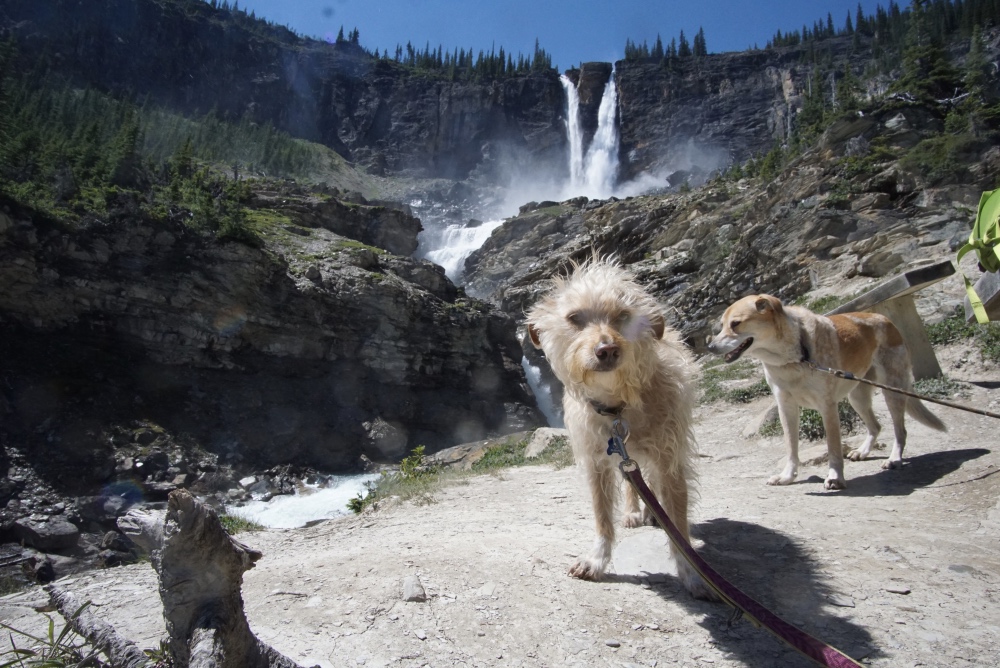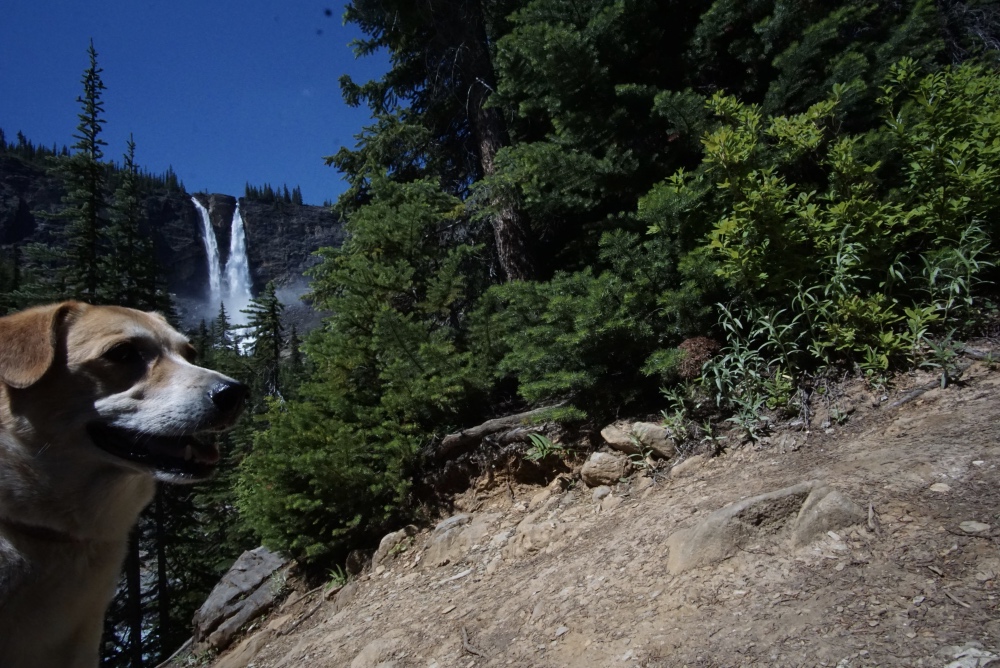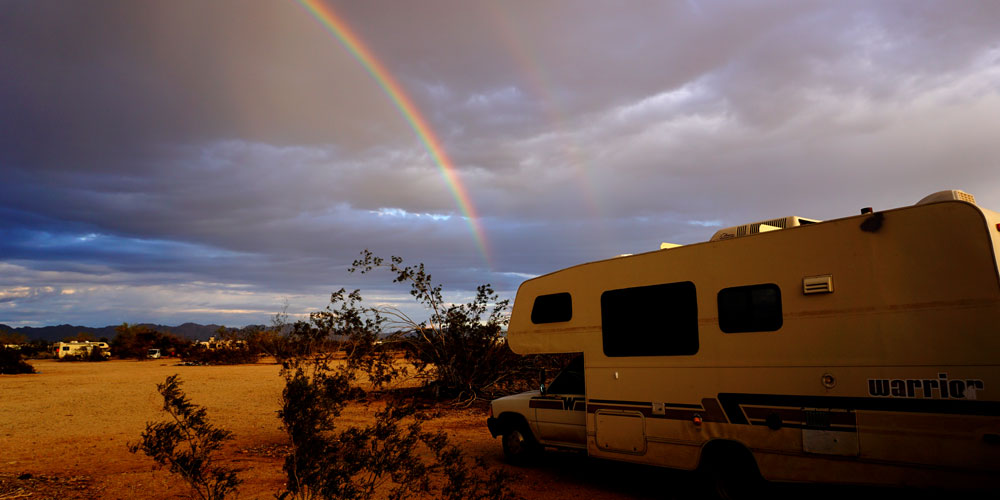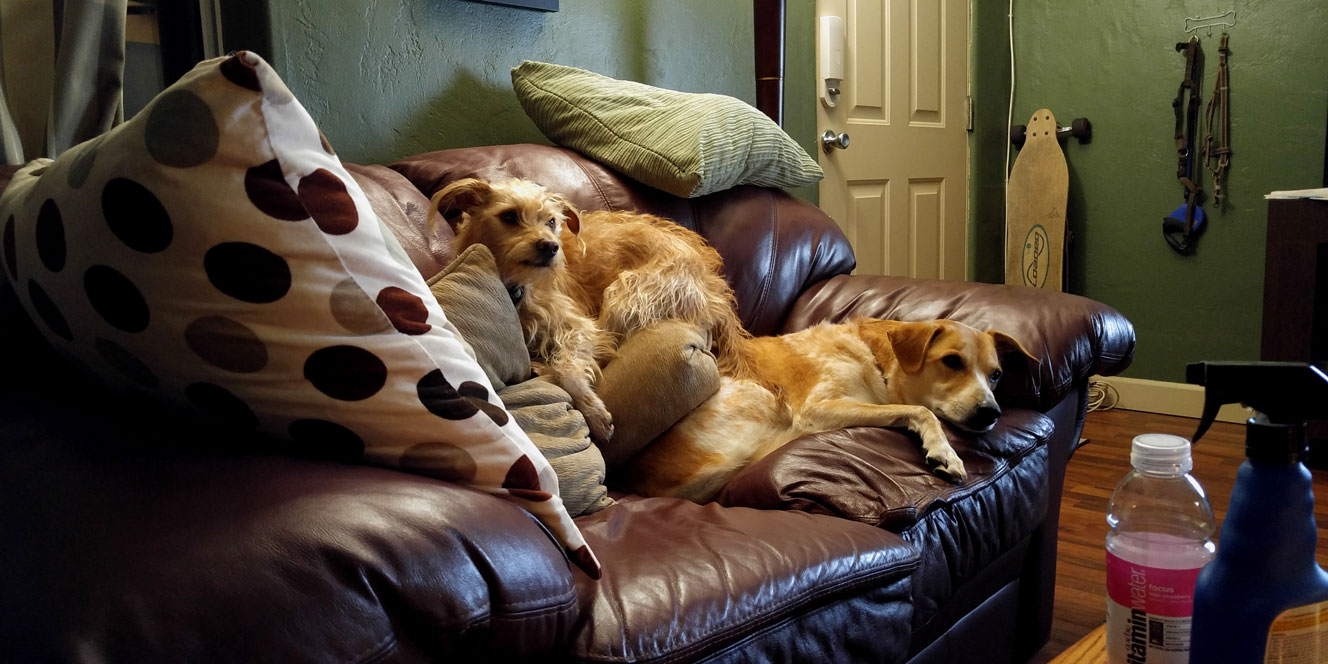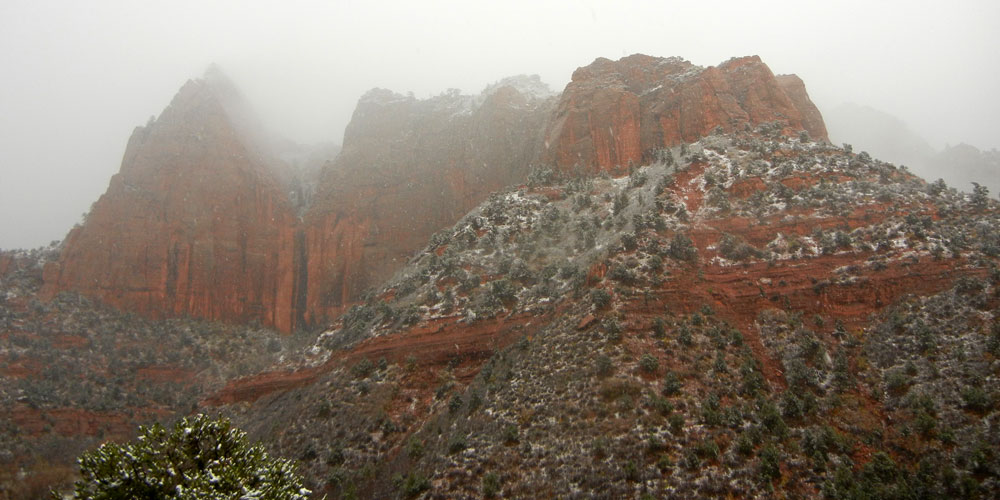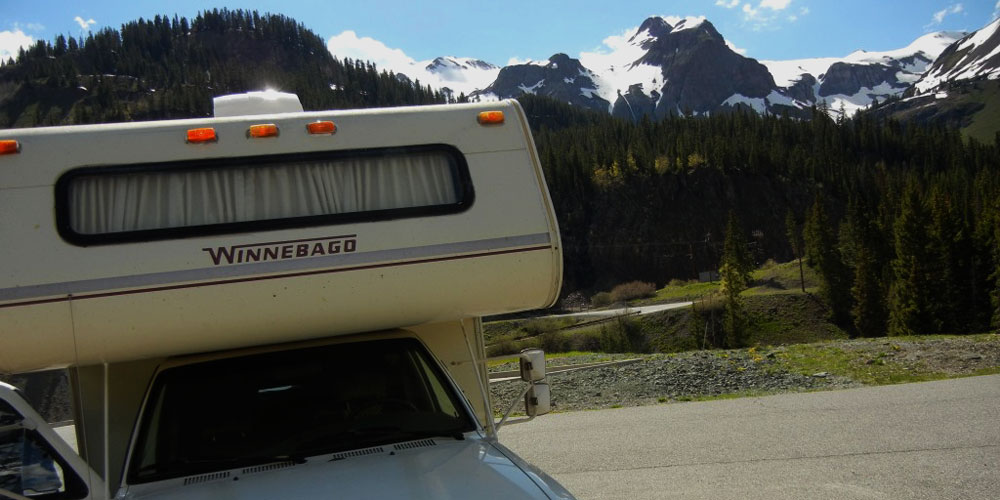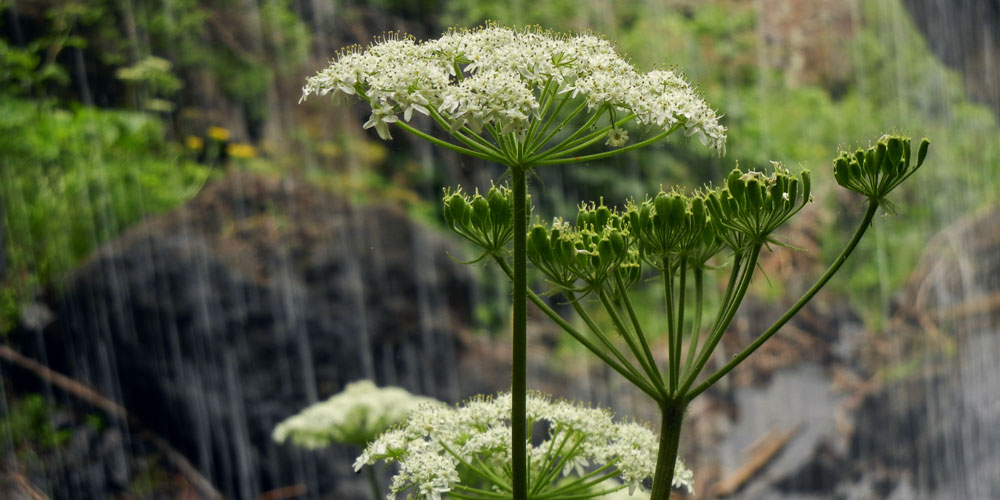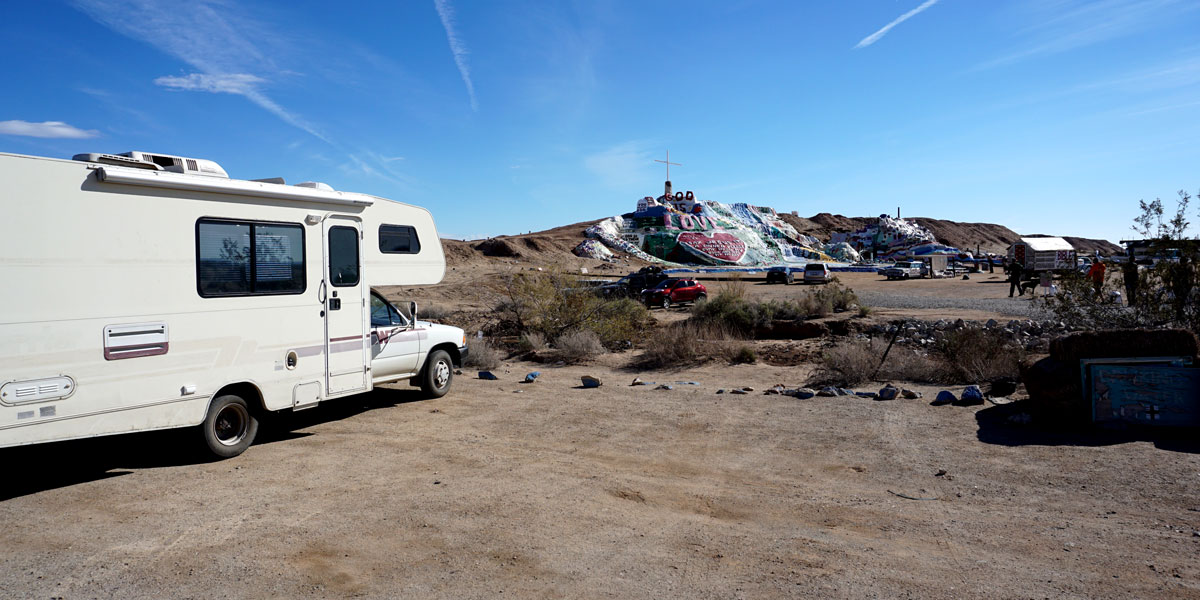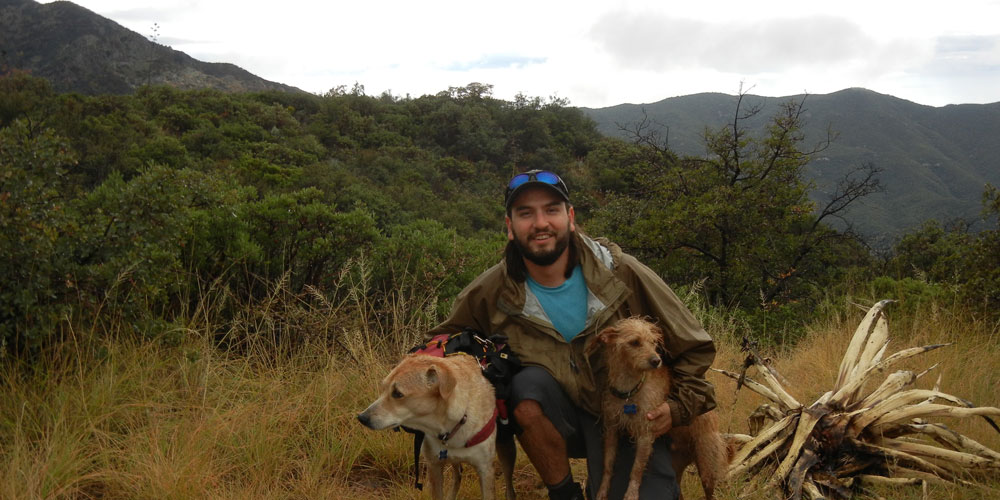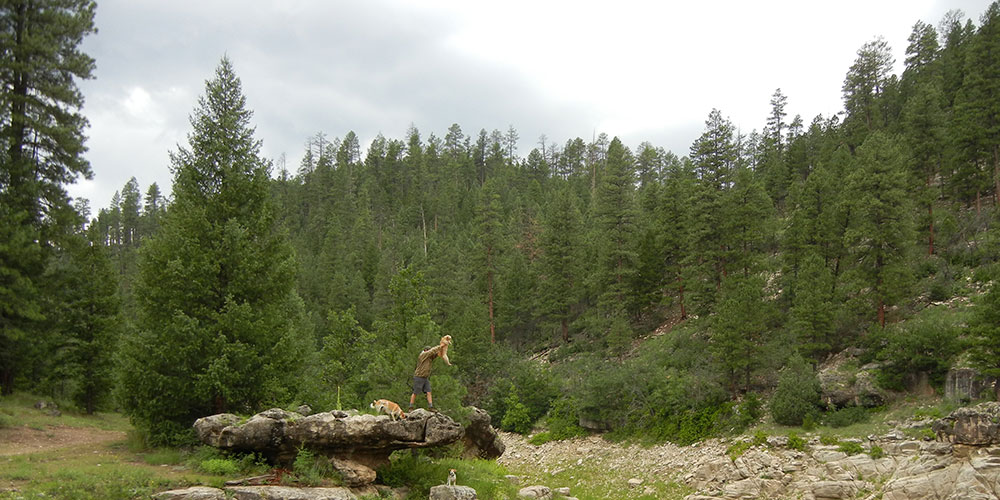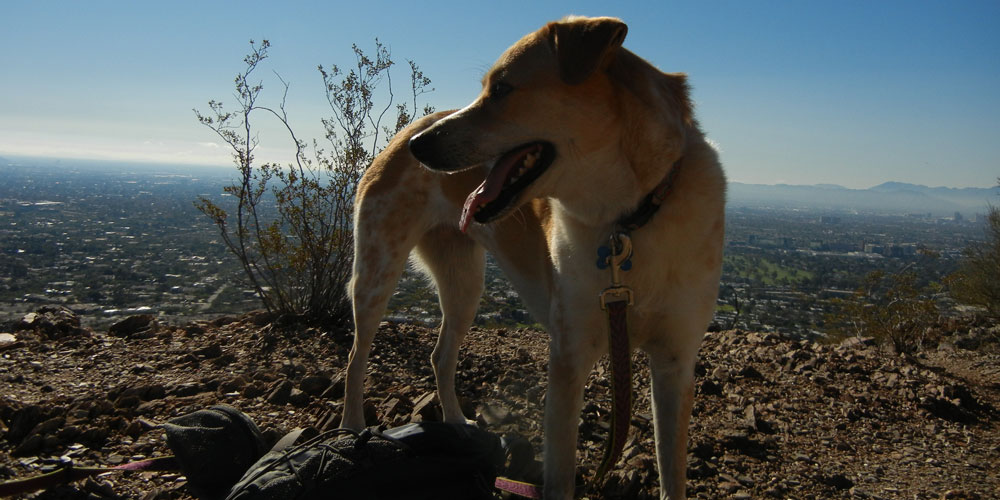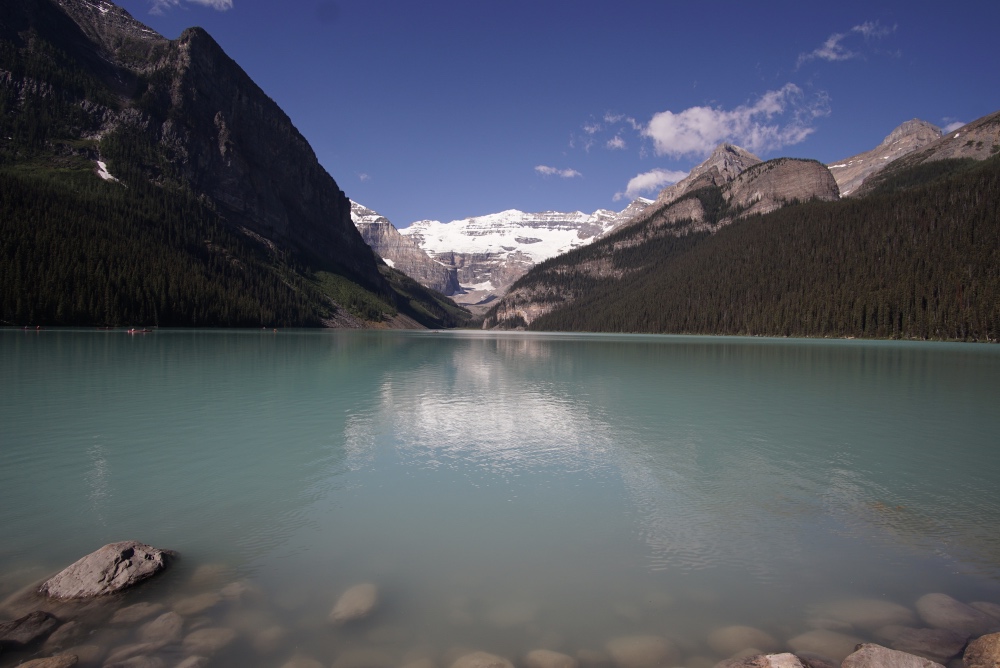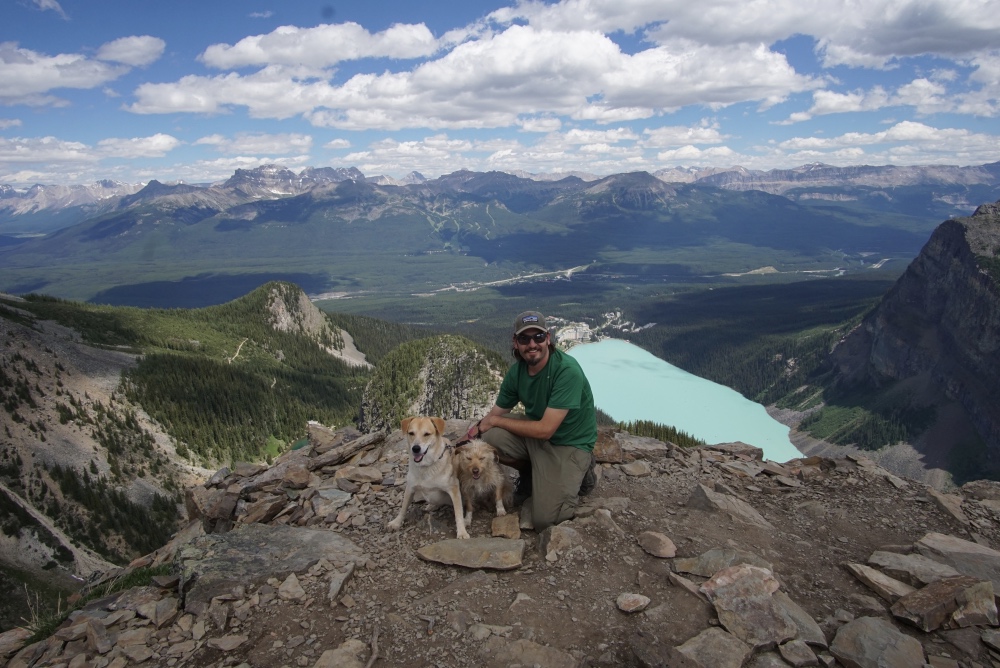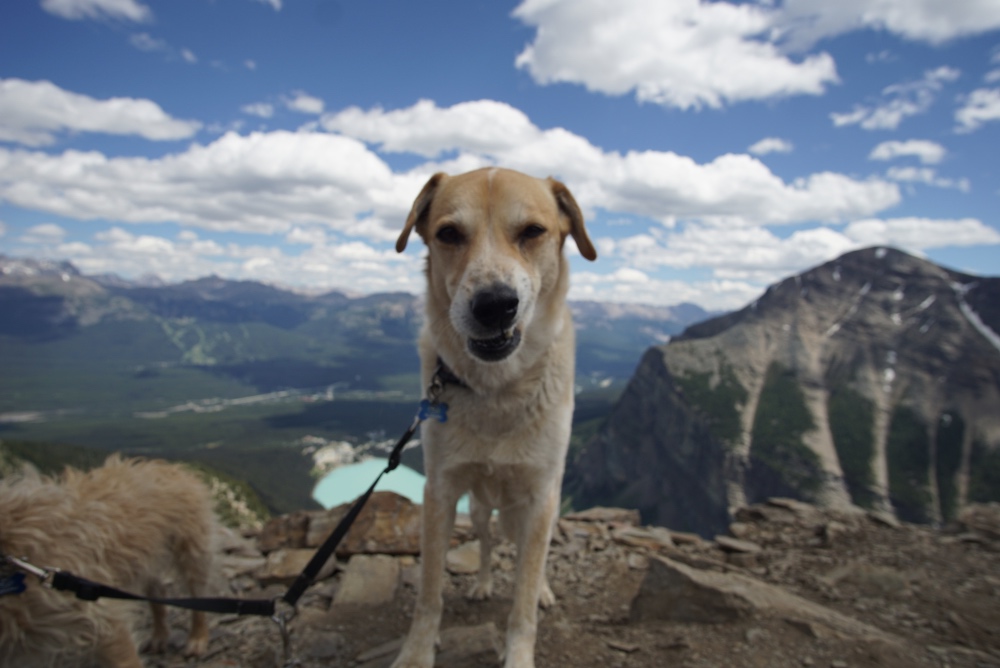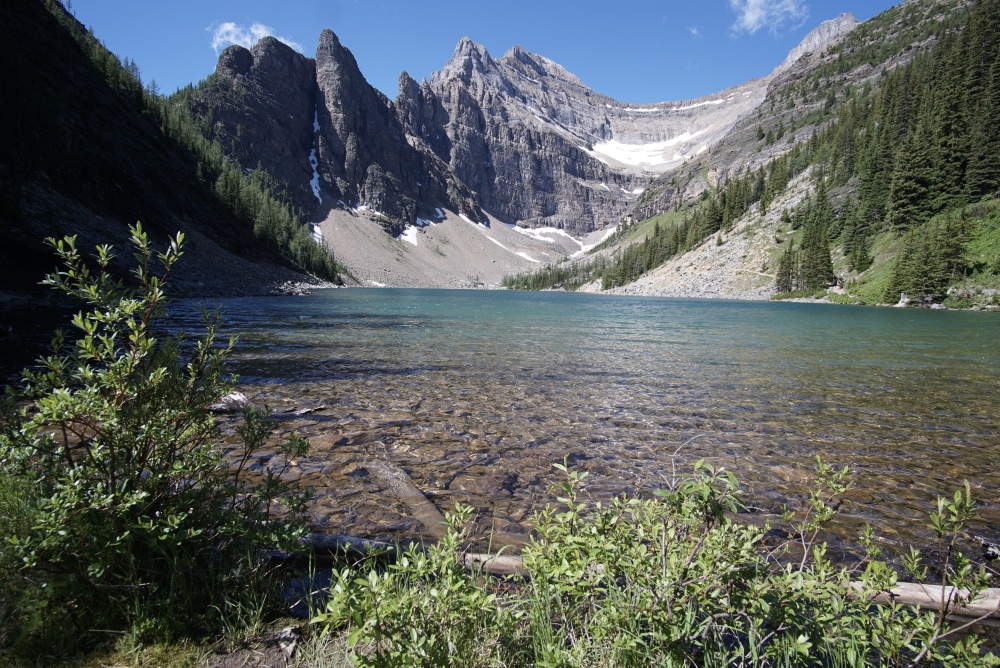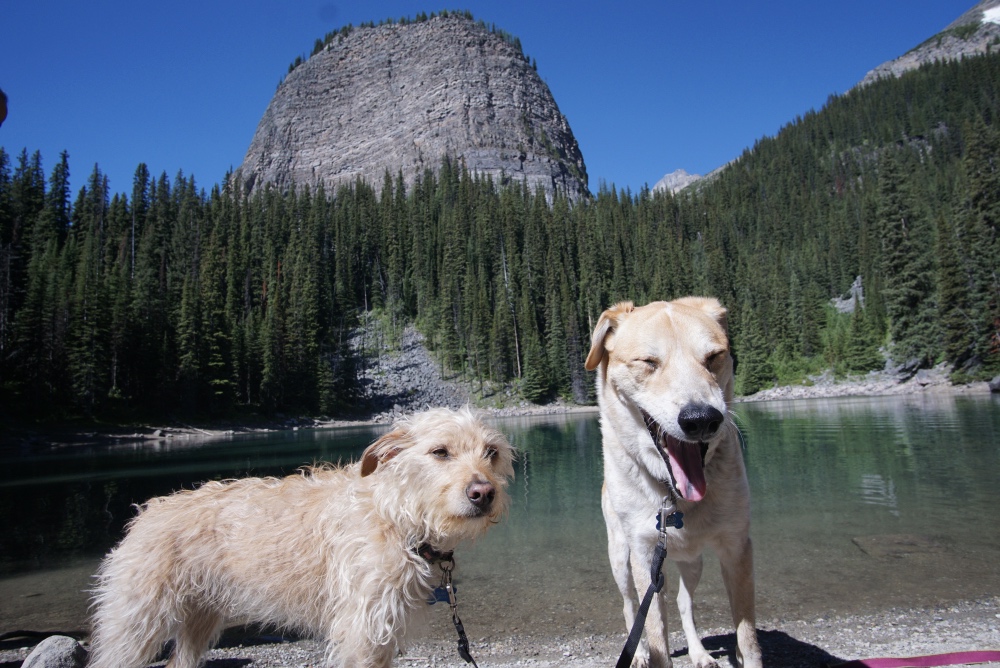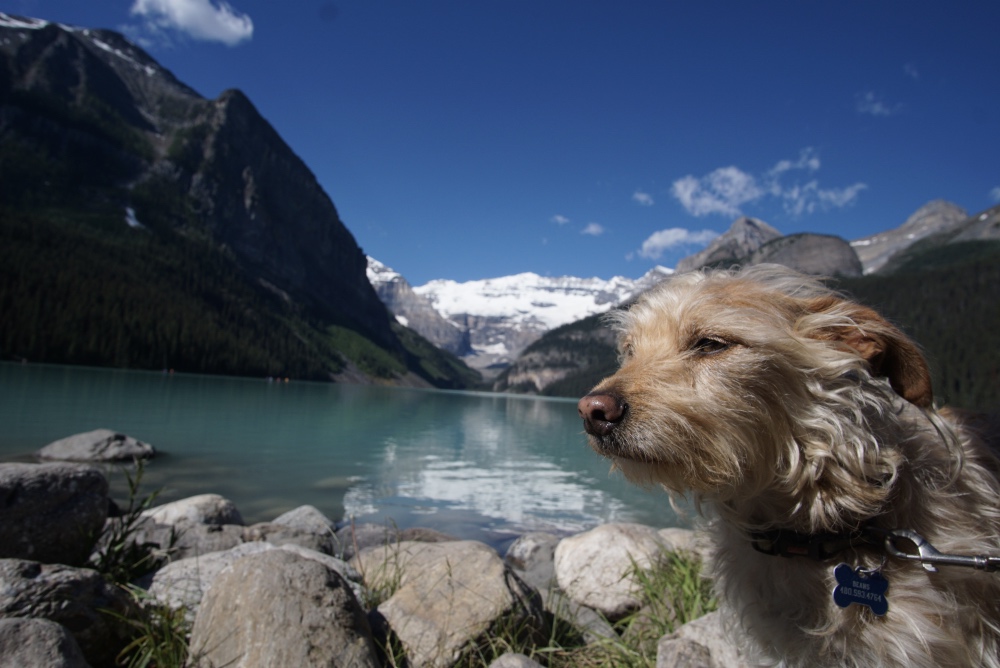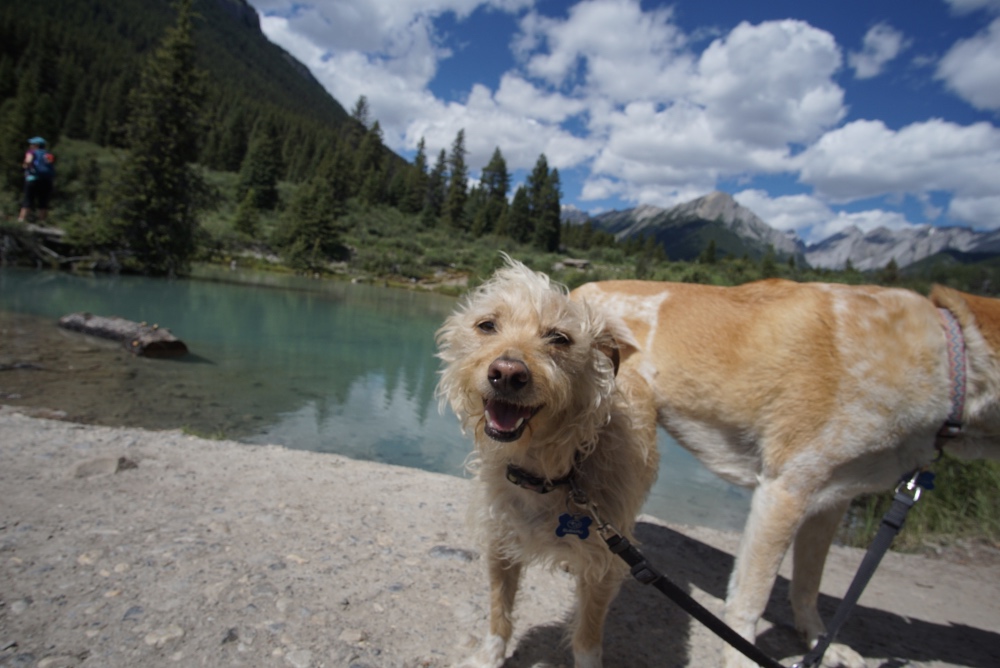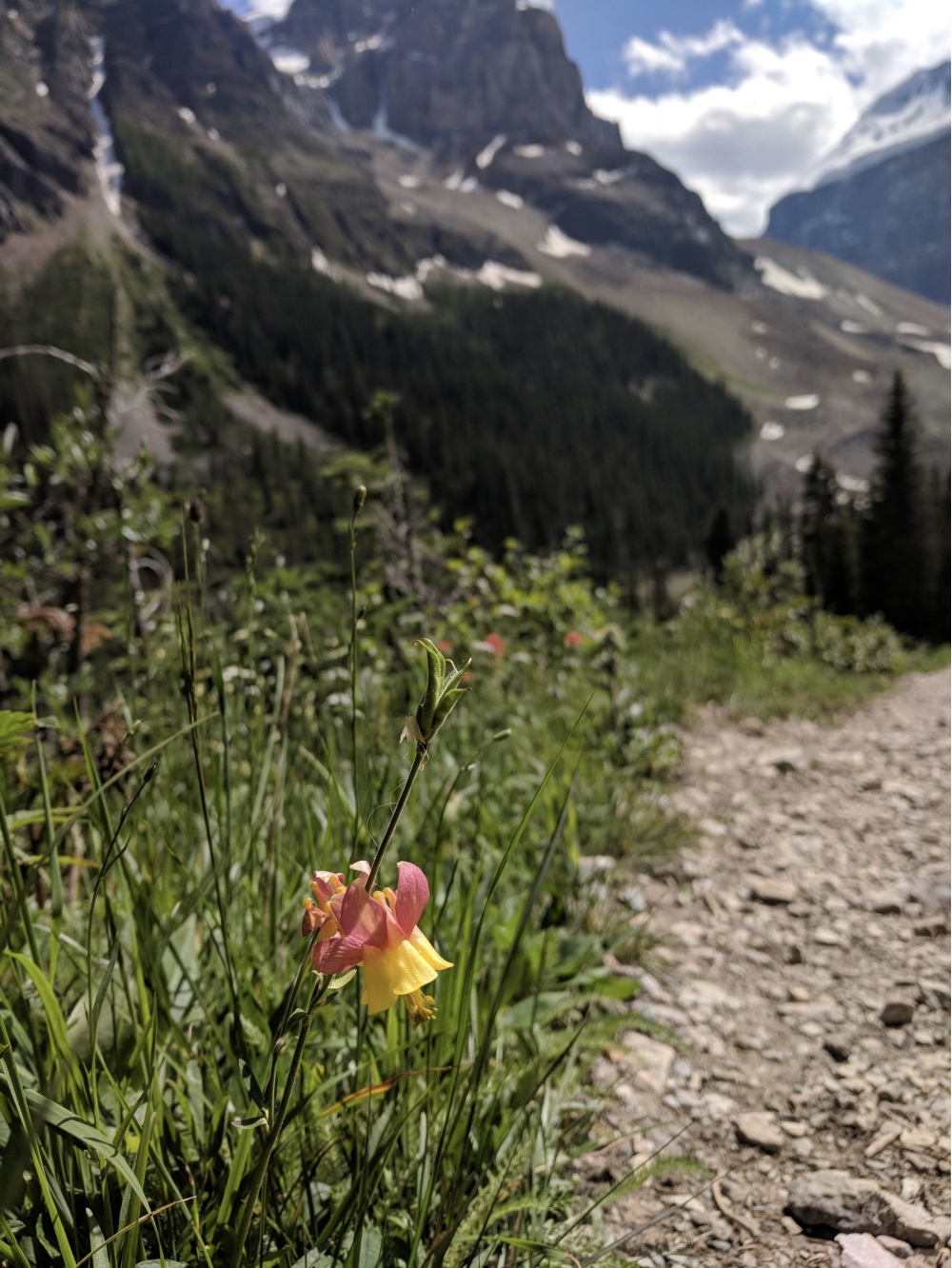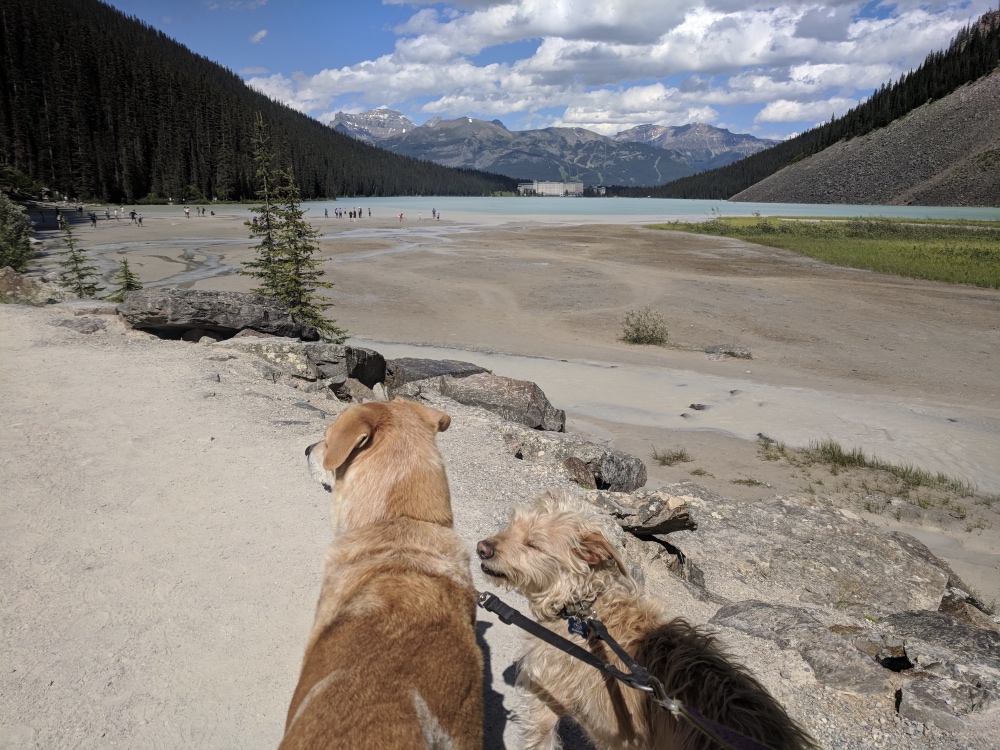After a decently grueling hike at Lake Louise, I was happy to take the weekend off and leave Banff to the masses. It’s been a common theme this entire trip to lay low for the busy weekends since I have the luxury of biding my time and hitting the trails during the off-peak days. During July though, the weekdays are only moderately off-peak in the National Parks. Thanks to some campfire grilled chicken and veggies, a full recovery was made and we were ready for our next adventure.
In between Banff and Jasper National Parks, I saw that I would be passing by Yoho, and I had heard that it was one of the lesser crowded parks, so I decided I’d take a look. Making an “early” start for me, I headed to Yoho to check out the first-come campground situation. Talking to the ranger at the entrance to the park, I found out that I basically only had one option for RV camping, Monarch campground, as the other campground was closed due to avalanches. The third campground at Takakkaw Falls was pretty cool, it was a walk-in campground where people would carry all of their gear about a quarter mile in to the campgrounds. I was lucky to get a spot at Monarch, as it was fairly small and even the overflow parking lot area filled up every day. That’s one major difference between the U.S. and Canadian National parks, once a U.S. campground fills up, that’s it, keep moving. The Canadian campgrounds will let you park anywhere there’s open ground, and won’t send you packing without a place to sleep like the U.S. will. Another key difference is the fire situation. In Canada, they make you pay a daily rate for a fire permit, and they stock a huge pile of firewood in the campground, and it’s all-you-can-burn. In the U.S., they’ll sell you a $6 bag of firewood that may last an hour, and a Canadian fire permit was about $6 a day, so a much better bargain.
After securing my camp spot at Monarch, I decided to hit up the visitors center in the little town of Field to get the scoop on the backcounty permits and trails in the park. I bought a trail map of the area, and found a single backcountry site available for two nights at Twin Falls. It once again worked out perfectly, I got to take my time, do a hike that evening, and had the whole next day to get ready for my backpacking trip. I did the Burgess Pass trail for the rest of that afternoon, and it was an awesome reprieve from the crowds where I didn’t see another soul for the whole 12km up and down the pass. At the top was a nice little snow bank, and I was able to have a mandarin flavored Yoho Snowcone as a summit snack. The dogs were also pleased to crunch on an unflavored snowcone of their own to cool down after a fairly grueling climb up to the pass. The pass overlooked Emerald Lake at the top, and the solitary views were absolutely stunning. A true hidden gem of a trail, there wasn’t even a sign on the highway denoting a trailhead.
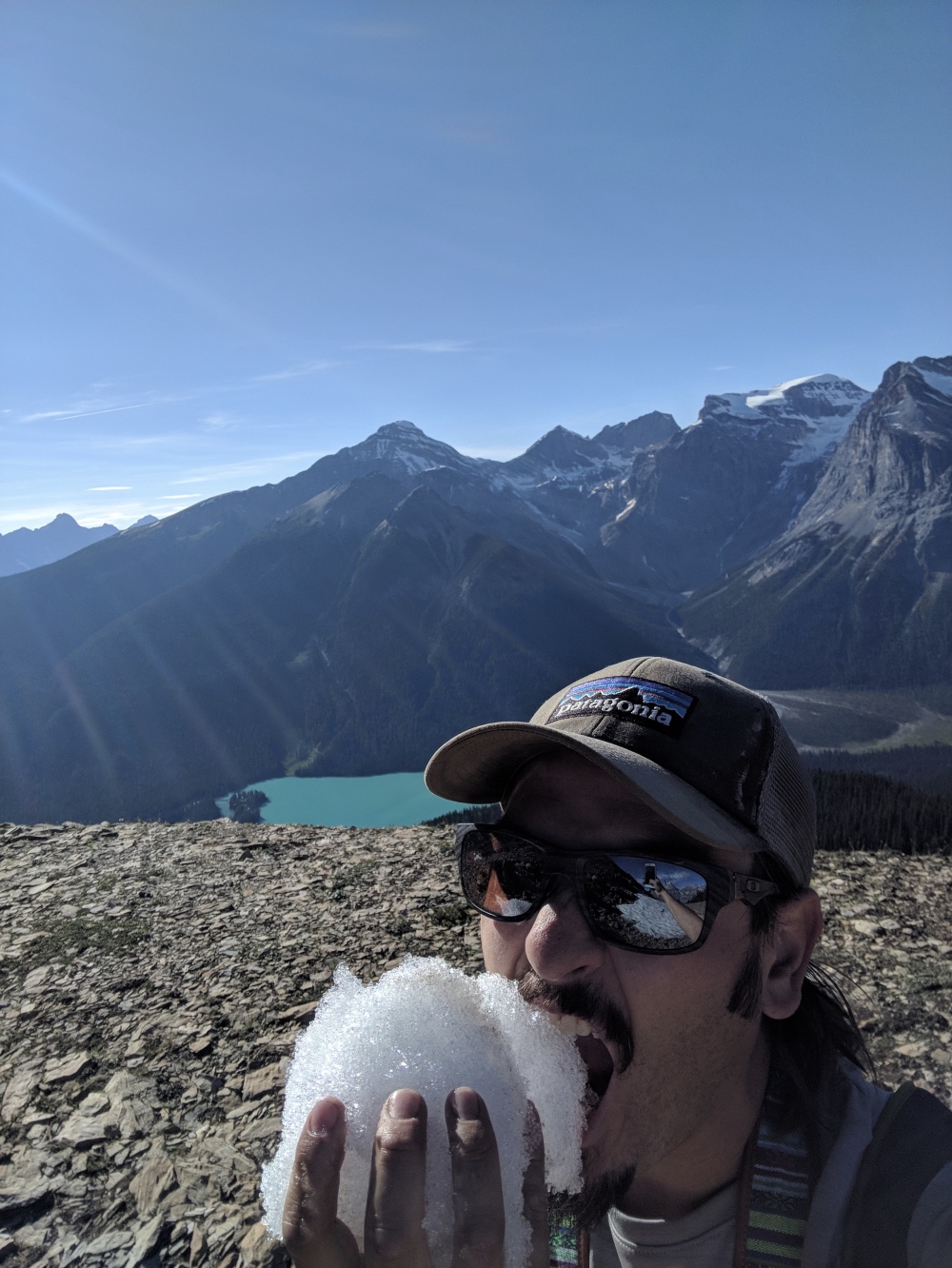

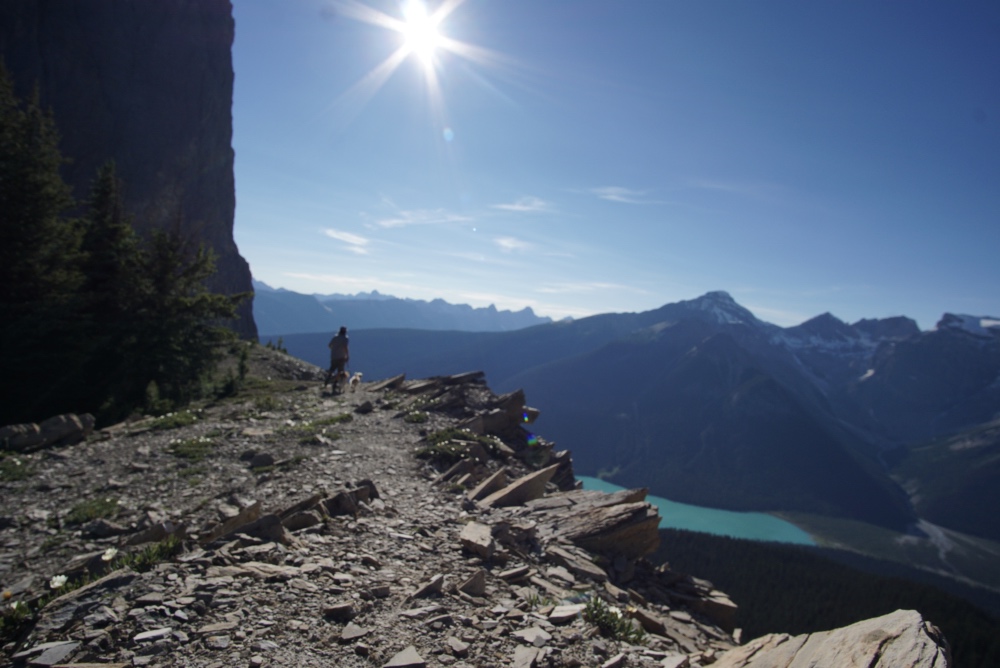
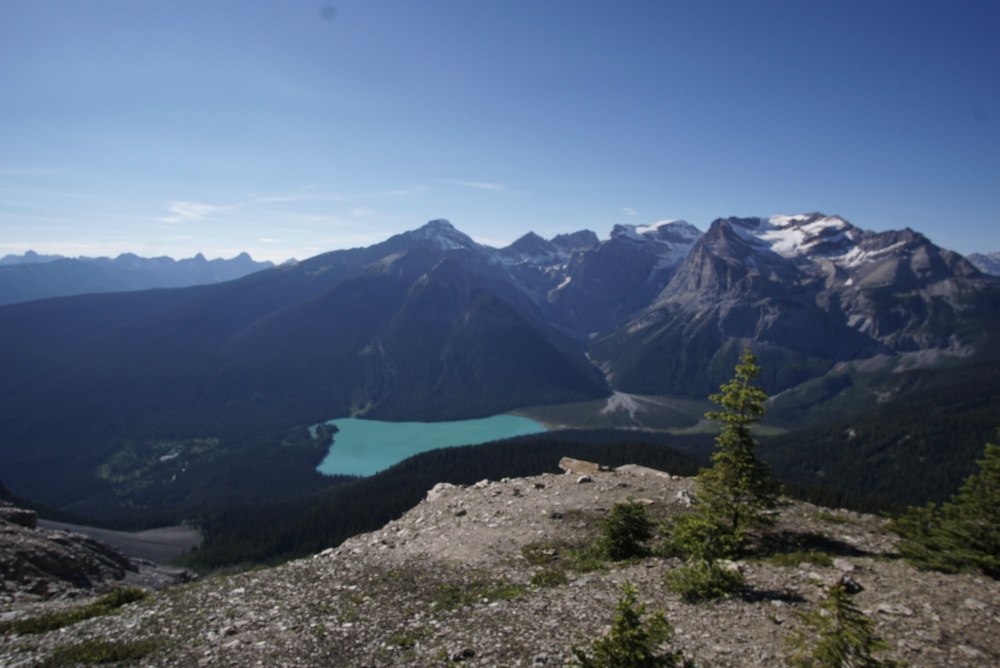
I got my backpack all packed and relaxed the next day, preparing for a two-night trip into the backcountry at Twin Falls Campground. It was only a 5-mile hike each way, and about 1000’ of elevation gain. I started early in order to get up the switchbacks in my RV before any crowds, and it was a good idea. There were a couple of switchbacks that required 3-point turns, wouldn’t have been fun if there had been any traffic. After a little bit of breakfast in the parking lot, and a little bit of fighting with Beans to get him to walk with his backpack on, we set off. Beans is definitely not a fan of wearing his backpack, he refuses to move when I put it on, it’s like he needs a jumpstart every time, and I have to force him to start walking. Once he’s in second gear and drops the clutch though, he seems fine. Thanks for carrying my beer for me Beans, it’s greatly appreciated.
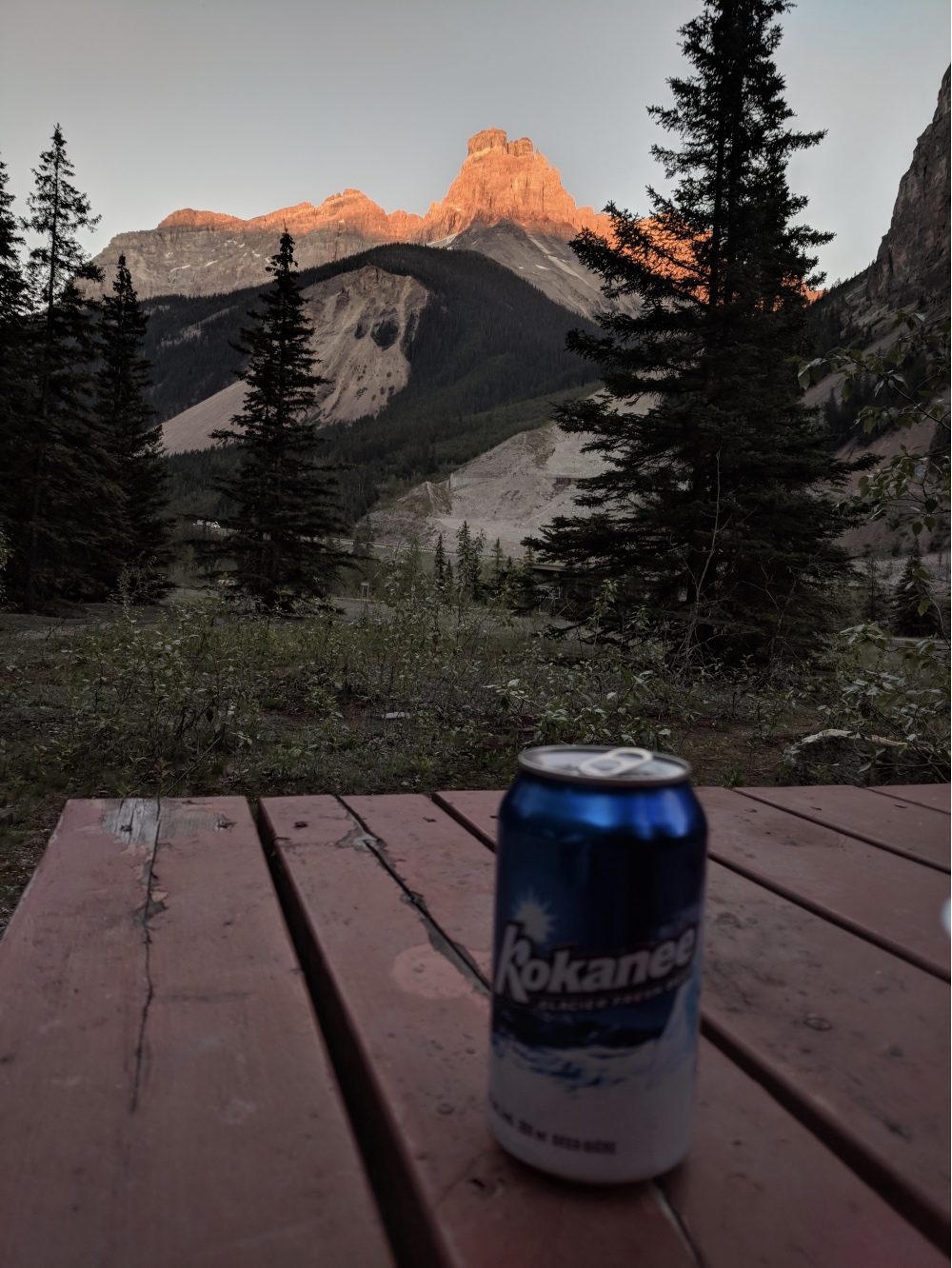
The hike was awesome, and the weather was perfect. We passed by Takakkow Falls (830’ and spectacular) which features a walk-in campground that was all booked up for my visit, but looked very cool. Next were Laughing Falls, which also had a backcountry campground, but was a few miles in. Then I got to my Twin Falls campground, and settled on which site I wanted, which was the most remote one that I could find. The setting was dramatic, with a trickling creek behind my tent to cool my beer down, and a river with a bunch of picnic tables that were our community dining facilities. I set up my tent, had a snack and a beer, hung my food on the bear pole, and packed up my supplies to head up a mile or so down the trail to Twin Falls.
The Falls were a spectacular, 400’ double cascade, with a staircase set of falls at the bottom. This set of falls is second only to Havasupai in awesome waterfalls that I’ve ever seen. There is also an awesome backcountry chalet called Twin Falls Chalet, where you can book a room and get fed from a wood-fired stove , prepared by a sweet old lady named Fran. She has ran the chalet since 1962, and she is a legend. Apparently she still plans all the meals for the guests, handles all the logistics, and even packs in some of the supplies for guests every summer. I learned all of this the next day, when I went on a huge loop hike over the top of the falls and back down the other side of the mountain. When I got back down to the chalet, I chatted with a nice Canadian couple I met at the top of the falls, who treated me to some of their wine and company. They had the chalet all to their lonesome somehow, and had to book months in advance. Since he didn’t have to carry in any of his own food or camping supplies, apparently the husband had hiked in a full case of wine so he could share with the other guests, which did not exist. The couple was awesome; they actually both worked for the National Park, lived in the teeny tiny town of Field, and absolutely loved the lifestyle out there.
Since I had two nights booked at the campground, we had the whole next day to explore, and I estimate that we went about 10 hard miles. We went to Twin Falls, hiked up to the top of them via Whaleback Ridge, back down to the falls on the Marpole Lake Connector, and back to the campground. Along the route I ran into a couple of young lady rangers that had huge net baskets, and I asked if they were catching butterflies. They said no, and were actually looking for a type of fungus that was killing some trees in the park. Over those 3 days in the Yoho backcountry, we hiked over 20 fully satisfying miles, and were happy to get to the next campground for a little R&R.